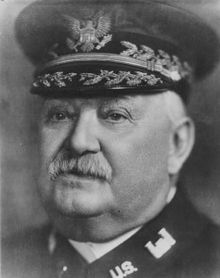
Summary
William Louis Marshall (June 11, 1846, in Washington, Kentucky – July 2, 1920) was an influential figure in the US Corps of Engineers.
William Louis Marshall | |
|---|---|
 William Louis Marshall, Chief of Engineers 1908–1910 | |
| Born | June 11, 1846 Washington, Kentucky |
| Died | July 2, 1920 (aged 74) Washington, D.C. |
| Place of burial | |
| Allegiance | United States of America |
| Service/ | United States Army |
| Years of service | 1862–1863,1868–1910 |
| Rank | Brigadier general |
| Commands held | Chief of Engineers |
| Battles/wars | American Civil War |
| Signature | |
At age 16 Marshall enlisted in the 10th Kentucky Cavalry, Union Army. He graduated from the United States Military Academy in 1868 and was commissioned in the Corps of Engineers. Accompanying Lieutenant George Wheeler's Wheeler Survey expedition (1872–76), Marshall covered thousands of miles on foot and horseback and discovered Marshall Pass in central Colorado. He oversaw improvements on the Lower Mississippi River near Vicksburg and on the Fox–Wisconsin Waterway canal system in Wisconsin. As Chicago District Engineer from 1888 to 1899, he planned and began to build the Illinois and Mississippi Canal. Marshall made innovative use of concrete masonry and developed original and cost-saving methods of canal lock construction. Stationed at New York (1900–08), he directed the Ambrose Channel project and the standardizing of fortification construction methods. He retired June 11, 1910—the final Chief of Engineers to have served in the Civil War—but his engineering reputation earned a special appointment from President William Howard Taft as consulting engineer to the Secretary of the Interior on hydroelectric power projects. General Marshall died July 2, 1920, in Washington, D.C.
References edit
This article contains public domain text from "Brigadier General William Louis Marshall". Portraits and Profiles of Chief Engineers. Archived from the original on March 6, 2005. Retrieved August 24, 2005.


